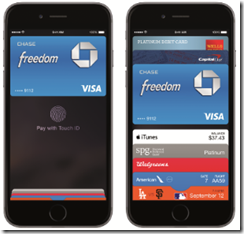We in the United Kingdom already use so little cash that we could easily have gone the way of the Nordics, where consumers have such good payment systems that mobile payments took a back seat. Yet this year the UK pulled ahead in The Digital Money Game. At the player category level too we saw major upsets to the apple-carts of more than one category of providers, and a perfect storm is now in the brewing for others.
While the acceleration happened on several levels, in this blog I focus on how mobile payments took off this year and consumers now enjoy a raft of payment services on the go. It is fortunate that the Payments Council, Vocalink and Zapp had time to get a head start, as the likes of Apple Pay and Alipay prepare to descend on the UK in early 2015.
What do British consumers really need?
 In the UK with a population of 64 million, we have over 84 million mobile connections and more than 72% of these are smartphones. An increasing number of ‘phablets’ are rapidly coming into use. We have 90.5% banked and a high penetration of internet services of over 84%.
In the UK with a population of 64 million, we have over 84 million mobile connections and more than 72% of these are smartphones. An increasing number of ‘phablets’ are rapidly coming into use. We have 90.5% banked and a high penetration of internet services of over 84%.
We take internet banking for granted, and have enjoyed bank transfers in minutes for years now, thanks to Faster Payments. An estimated 5.7 million mobile banking transactions take place daily in the UK. We expect to pay everywhere with cards, with over 55 million credit cards and 95 million debit cards issued over the last year.
So do we really need mobile payments? We may feel overcharged by our banks, and while we may resent surcharges on card payments at some merchants in general domestically the use of cash is more of a lifestyle choice than a necessity. I can’t recall when I last used a cheque book. Yet survey results this month claim that enthusiasm for mobile payments has skyrocketed over the last 15 months, with 44% of those polled prepared to even switch accounts to access mobile payments.
London transport goes cashless
Absence of a real need may be one reason why the promise of NFC remained unfulfilled since 2005, but neither consumers nor merchants quite invited it in- until recently. I have been closely involved in projects involving mobile payments and NFC since the early days when Transport for London (TfL) was considered to be the major prize that everyone worked hard to win. Yet it took a decade before mobile payment services on the TfL network launched and even today while it is possible to pay using mobile phones, people are just beginning to use their contactless cards. While in theory mobile payments are available on EE and Vodafone, in practice some elements of the consumer experience remain to be ironed out.
Contactless payments – here at last!
 It was quite a novelty to see the new Barclaycard contactless payment gloves trialled for Christmas shopping at some stores this season. The Barclaycard gloves have an embedded contactless chip that is linked to a credit or debit card to pay for transactions of up to £20. Contactless payments are also supported by the Barclaycard PayTag on London buses, McDonalds, Pret, Starbucks and many other chain stores.
It was quite a novelty to see the new Barclaycard contactless payment gloves trialled for Christmas shopping at some stores this season. The Barclaycard gloves have an embedded contactless chip that is linked to a credit or debit card to pay for transactions of up to £20. Contactless payments are also supported by the Barclaycard PayTag on London buses, McDonalds, Pret, Starbucks and many other chain stores.
We’ve had contactless payments infrastructure building up for years now, accelerated by the 2012 Olympics, attracting major investments from Visa Europe and others. Today across the UK, an estimated 300,000 terminals accept contactless cards. There are over 48.3m contactless cards issued, with a quarter of all plastic new cards being contactless-enabled. Over 2014 UK consumers are expected to spend £2 billion through contactless payments,
What does it mean for the consumer in everyday life?
As a British consumer, paying for things has now become easier. Apart from the danger of card clash, for which we have been most soundly educated, we have to be savvy to protect ourselves from a constant stream of marketing offers. From the consumer perspective, the winners are those who use the new features to shop smarter, save money and stick to their budget.
We now need even less cash, and at stores there are many more self-service checkout points that there were in 2012. You won’t have to tote around a load of loyalty cards either – Tesco has already begun to trial their PayQwiq service at 32 stores. Triallists use the online grocery service and add card details for use through the app. In store they buy up to £400 a day, sign into the app with a four-digit PIN and pick the card they want to use. A QR Code appears on their phone which the till scans to take payment and credit them with Clubcard points.
Life has become easier in many ways. Just as you can easily hail a cab and pay for it through the Uber app, something that London black cabs have not been too pleased about, expect more “Uber-like” innovations wherever there are pain points to be found.
New ways to pay: Pingit, Pay-em or Zapp-em?
 This April the Payments Council launched an important service called Paym. This allows convenient transfer of money between participating UK bank account holders. Earlier, Barclays supported Pingit, since 2012 as a great new way to send money in minutes using a phone, but Paym is integrated into customers’ existing mobile banking or payment apps as an additional way to pay, making it possible to send and receive payments using just a mobile number.
This April the Payments Council launched an important service called Paym. This allows convenient transfer of money between participating UK bank account holders. Earlier, Barclays supported Pingit, since 2012 as a great new way to send money in minutes using a phone, but Paym is integrated into customers’ existing mobile banking or payment apps as an additional way to pay, making it possible to send and receive payments using just a mobile number.
Customers register their phone number and the account they want payments made into with their bank or building society and people can then pay directly into the account using just a mobile number – no sort codes or account numbers are needed.
How Paym works
To send a payment, you select the mobile number to pay from your list of contacts, along with an amount and a reference. Behind the scenes the sender’s bank accesses the Paym database to confirm that the recipient is registered with the service and to retrieve their bank or building society account details.
The app helps to confirm details and receive immediate confirmation. The real magic behind this is managed by the Faster Payments Service or by the LINK network, whether or not the recipient phone is on or within coverage. In most cases the payment reaches the recipient account almost immediately and they see it in recent transactions on their account.
How Zapp proposes to work
 Zapp, announced early in 2014 now claims partnerships with major merchants including Asda, Sainsbury, House of Frasers and more. People will be able to pay for goods and services using Zapp, authorising the transaction from their mobile banking app. The payment will be made directly from their bank account, with the use of tokens to offer better security.
Zapp, announced early in 2014 now claims partnerships with major merchants including Asda, Sainsbury, House of Frasers and more. People will be able to pay for goods and services using Zapp, authorising the transaction from their mobile banking app. The payment will be made directly from their bank account, with the use of tokens to offer better security.
What is most interesting really is the effect this will have in enabling payments to small businesses. Shaving off pennies on each transaction can bring welcome relief to a number of traders and servicemen who can expect to take payments using their mobile phones.
A perfect storm brewing
If you are a provider, this is no time to be complacent. Consumers are set to “select and forget” their means of payment and many will make their choice in 2015. Merchants too are selecting their partners just now.
With Paym, banks continue to compete through P2P services that bear their own brand and can be differentiated in some ways. Zapp, on the cards for (delayed) launch in early 2015 will further put the banks in the driving seat as far as payments go.
Weve, a joint initiative of mobile operators in the UK was to roll out Pouch but has already announced it would close the wallet this year. With the HCE initiative announced by the card schemes in February this year, mobile operators no longer dictate terms with regard to NFC services, and in the UK also have the larger consideration of M&A on their minds, with the proposed acquisition of EE by BT on the cards.
 With Apple Pay, already in use in the US and preparing to enter the UK market, I think we may expect a mega-battle on the cards for 2015. Google Wallet, Amazon and others are already highly active in the market.
With Apple Pay, already in use in the US and preparing to enter the UK market, I think we may expect a mega-battle on the cards for 2015. Google Wallet, Amazon and others are already highly active in the market.
Besides, we have not even begun to discuss the wider digital money picture. This includes a host of innovation from newly funded players including not just Fintech startups but well-funded Alipay, richer by $25 billion with the largest IPO having come through this year, and WorldRemit and Transferwise, expanding rapidly in remittances.
UK then is the place to watch. Shift Thought continues to do in-depth research on this market. Our detailed interviews with leading UK providers will shortly be published. Do drop me a line at contact@shiftthought.com if you have further questions.
Photo Credits: Promotional material from Barclaycard, Apple Pay, Zapp and Paym


Pingback: Billing Views| Storm brewing for UK payments in 2015
Pingback: Digital Money | Apple Pay comes to the most contactless ready country - UK! | Digital Money